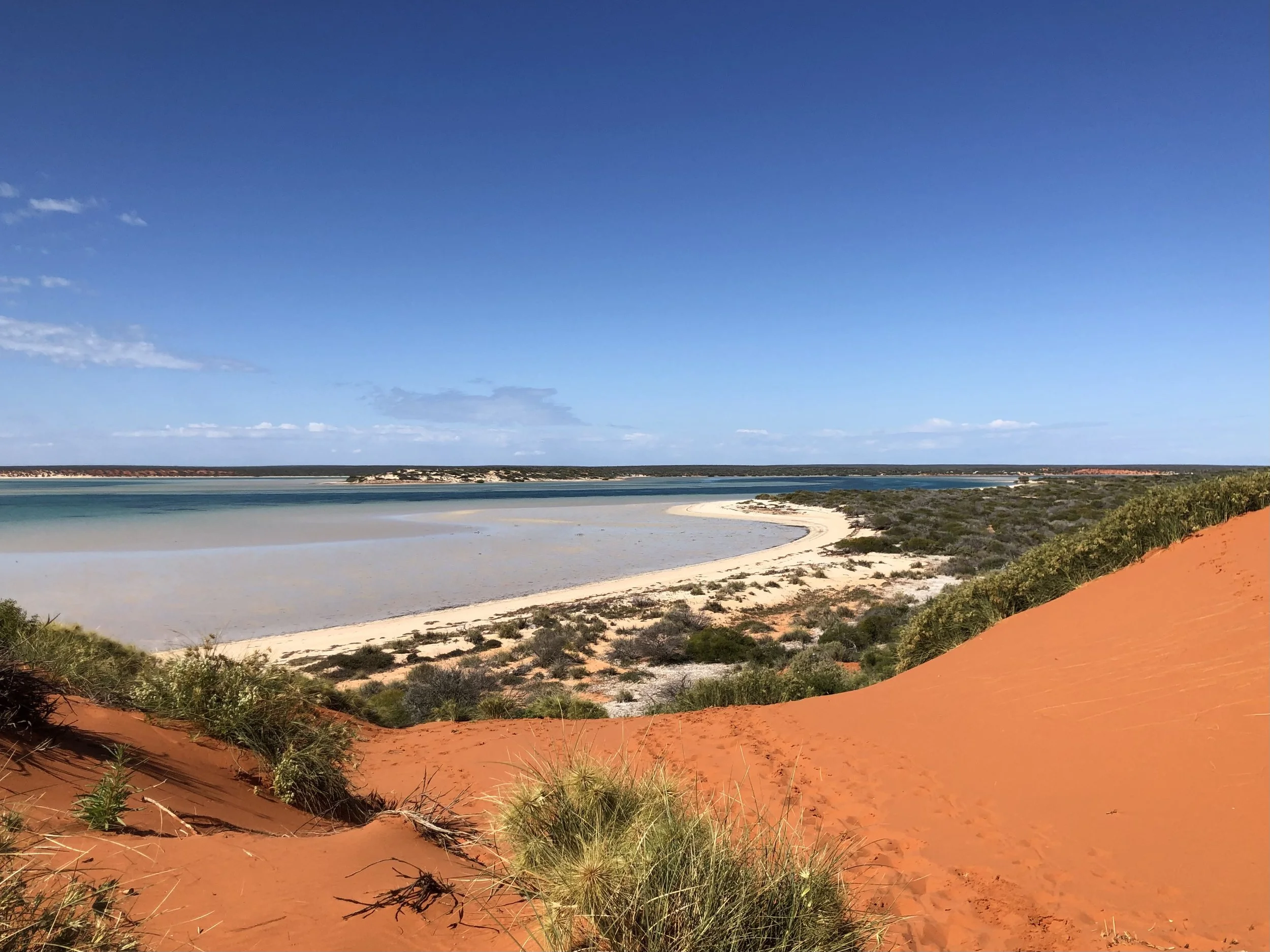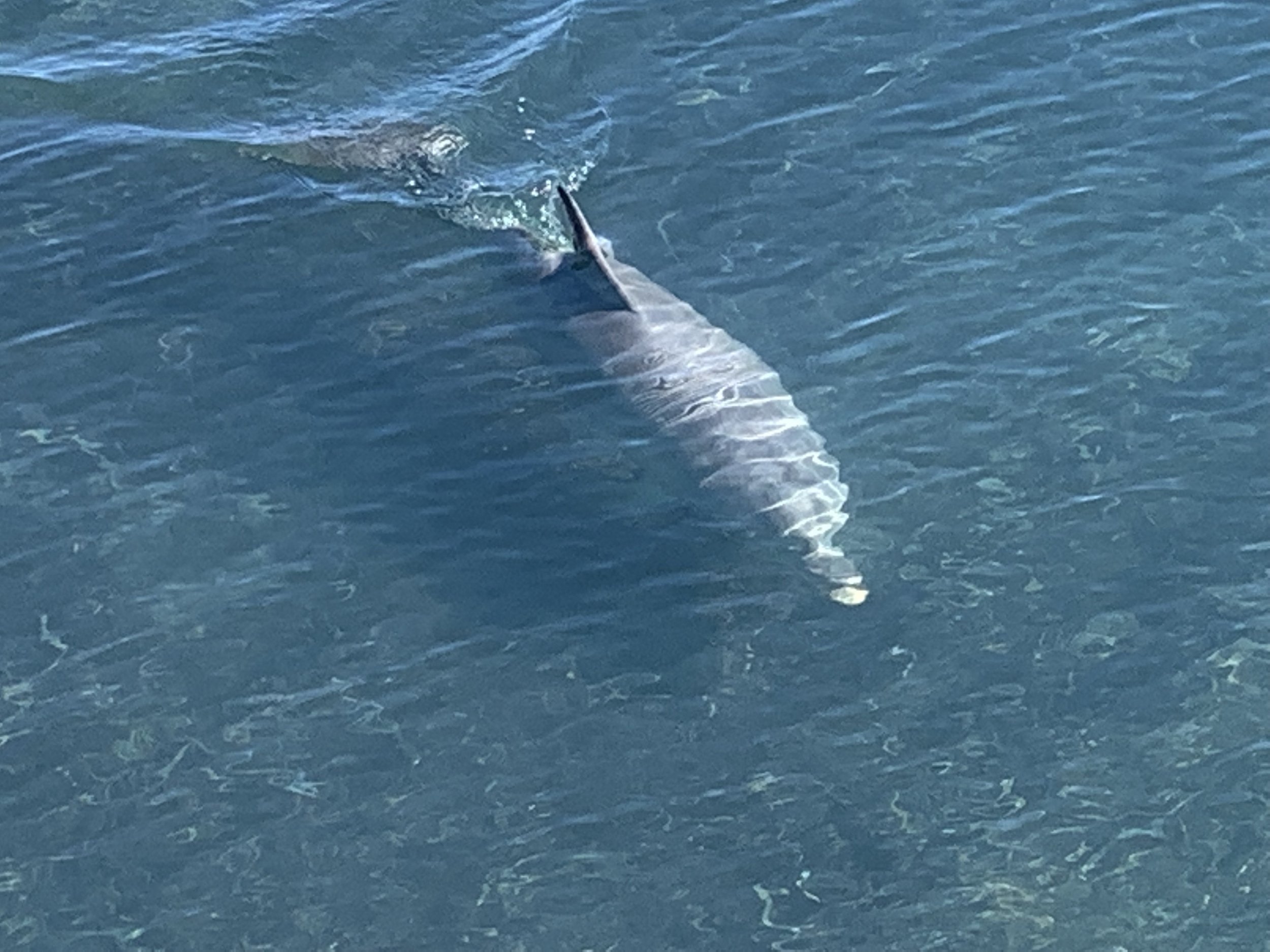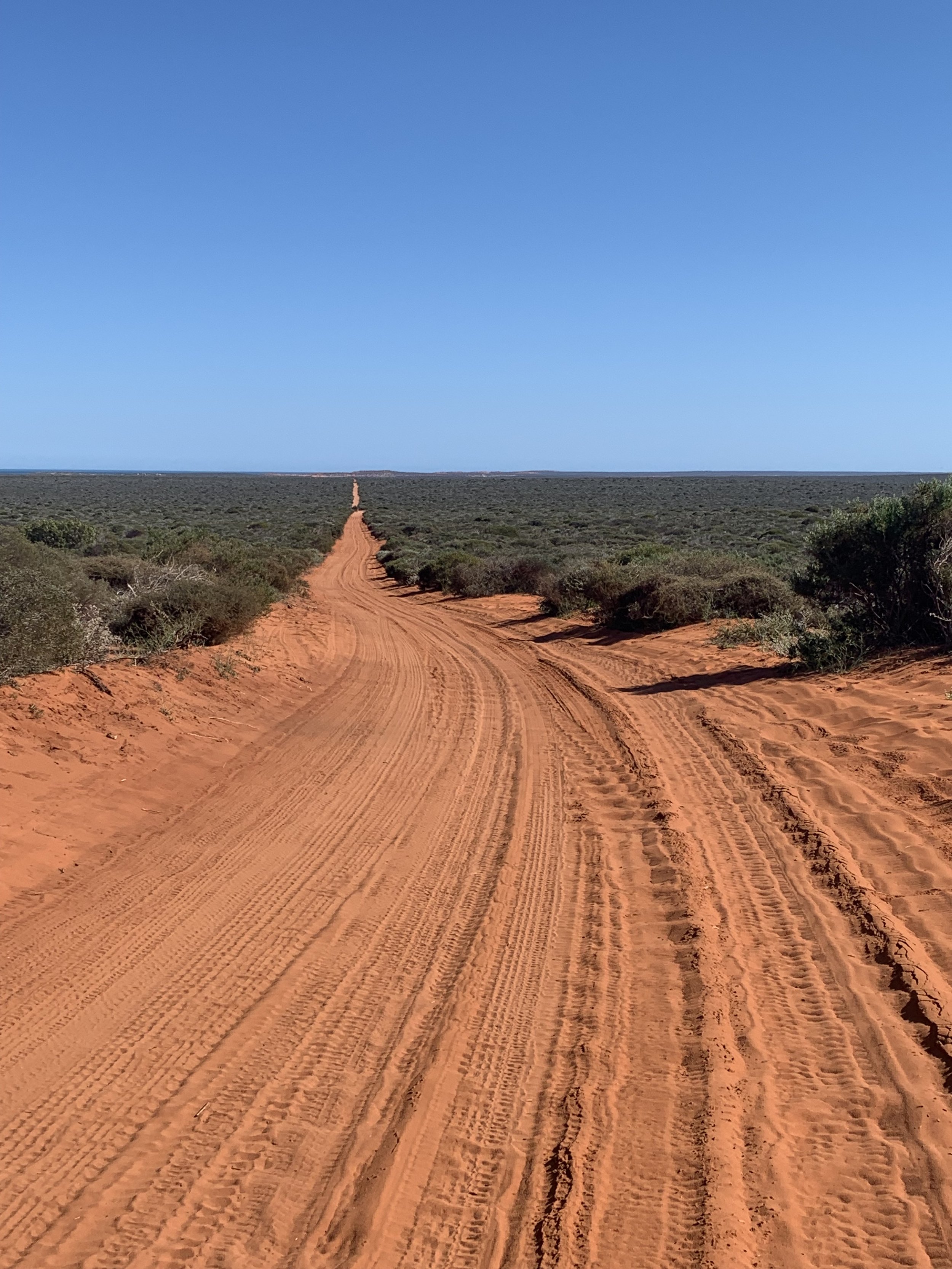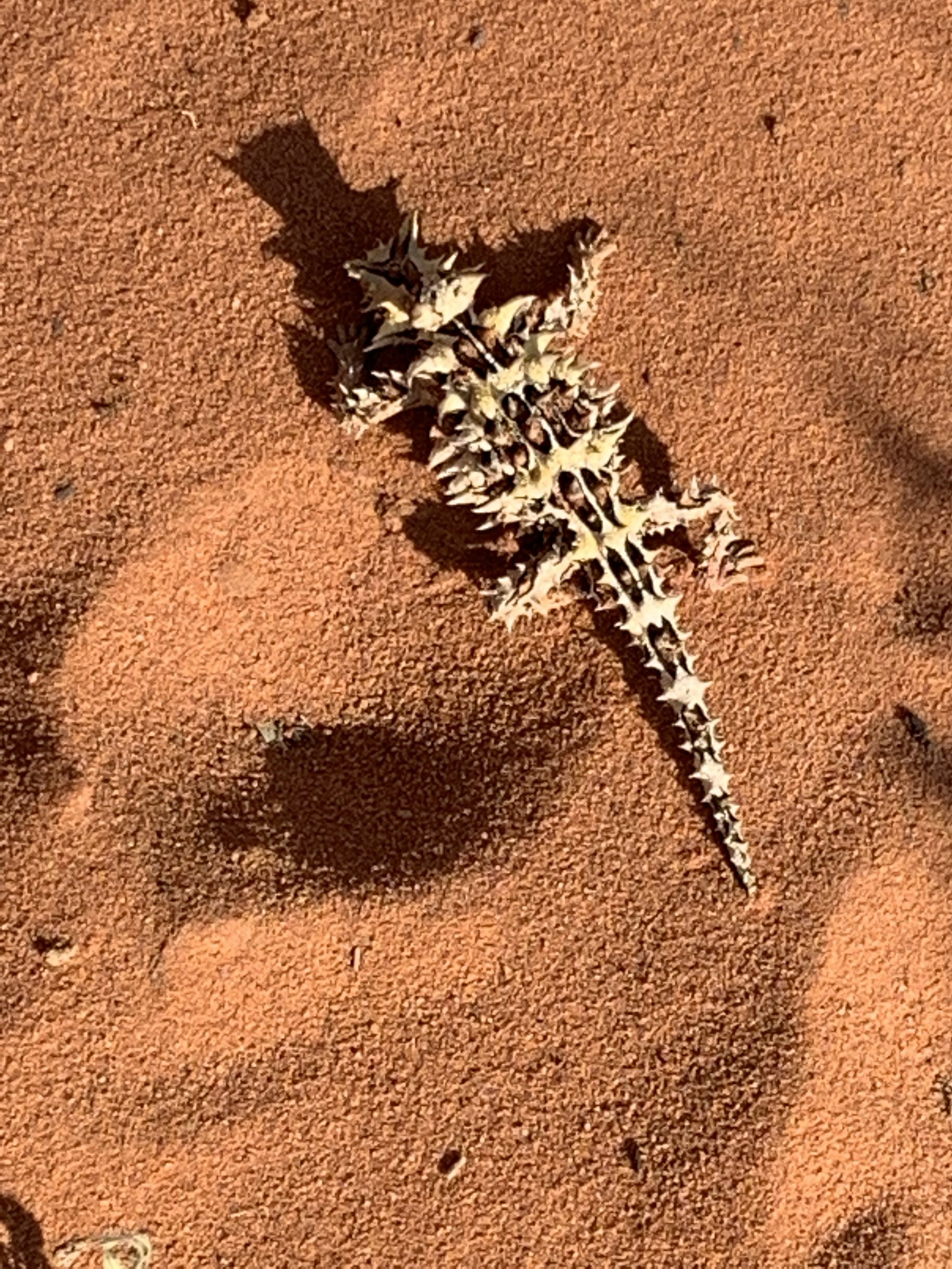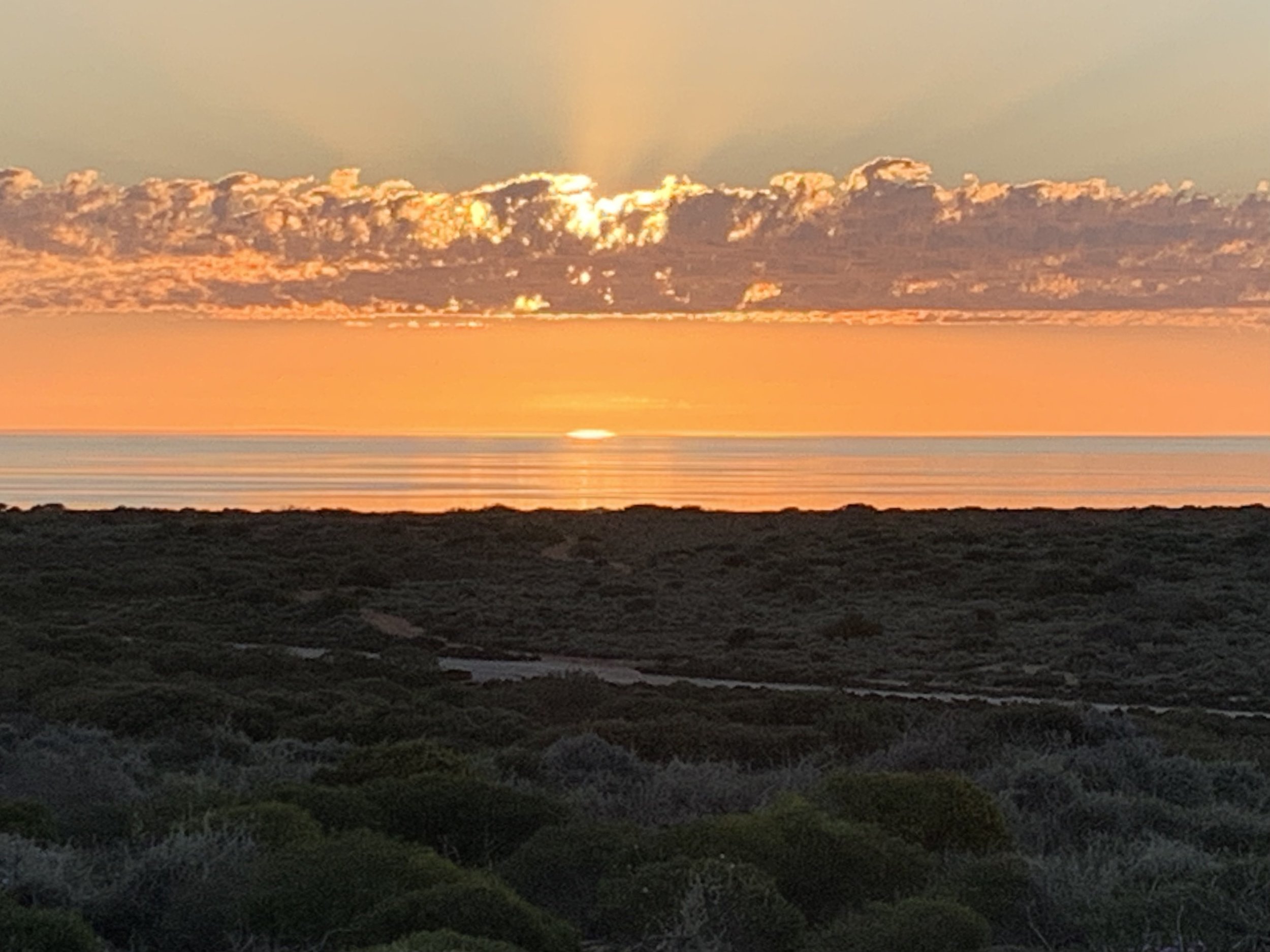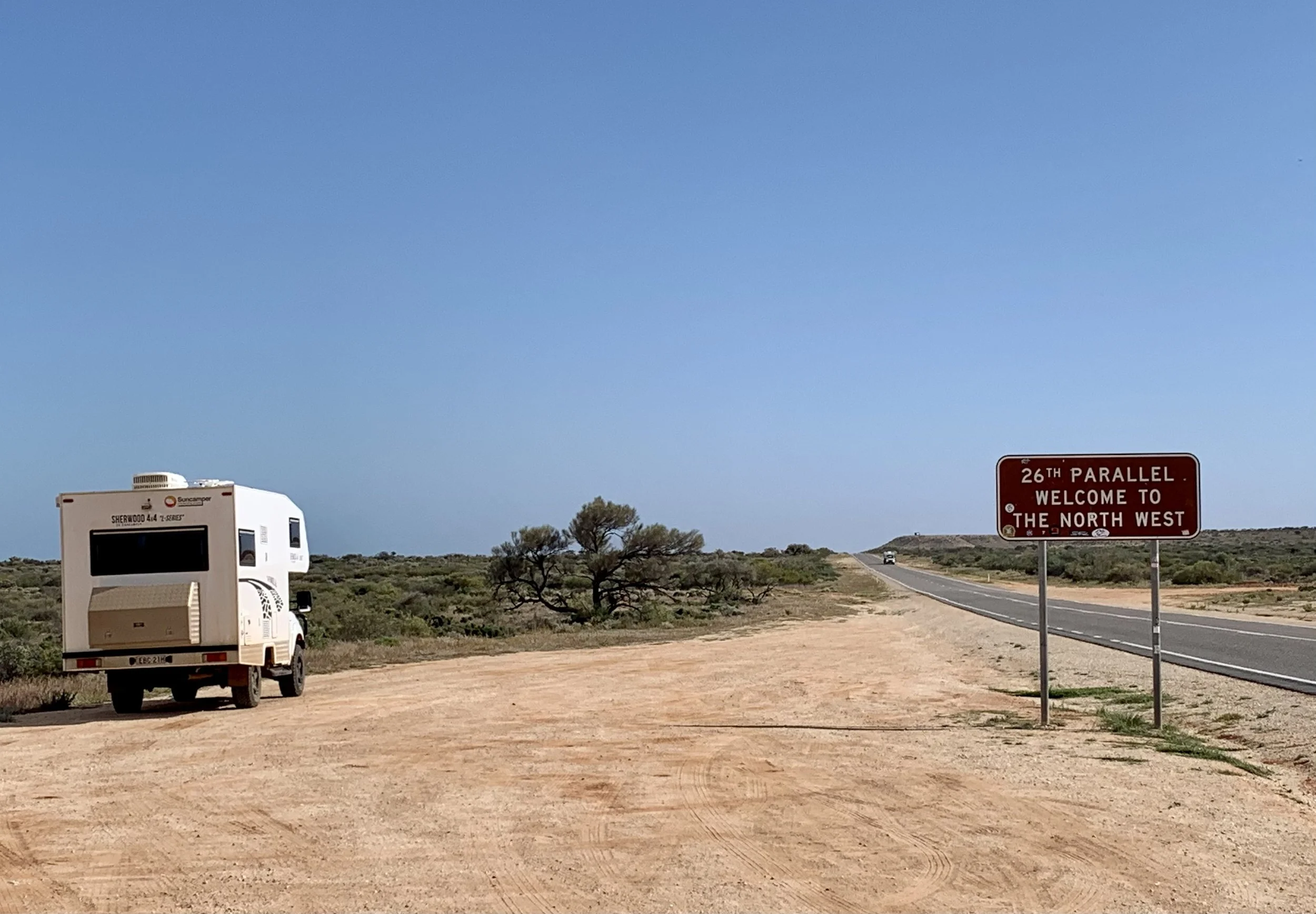Monkey Mia, here I go again
Roughly 1000 kilometres north of state capital Perth is Shark Bay, a name on many travellers’ lists. I’d imagined a little town a bit like Byron Bay – beautiful setting, relaxed vibe, happy-hippy types, quirky galleries – but I was way off. It’s a resort: Monkey Mia Dolphin Resort, Shark Bay, Western Australia. There were swarms of name-tagged sightseers led by shouty bi-lingual guides carrying follow-me flags. This was not what I’d expected at all.
The surroundings were pleasant enough, but oddly uninspiring; either unnaturally crowded around dolphin-feeding times or almost empty. I experienced a feeling of anticlimax at first. Maybe it was just me, who’d seen so many interesting sights over the last little while, I’d become difficult to please. Maybe you just can’t maintain huge enthusiasm all of the time. I didn’t really believe that, however. As far as Monkey Mia was concerned, I concluded I’d have rather taken my chances spotting a dolphin in the ocean from a clifftop lookout than watch an orchestrated feeding session facilitated by exceptionally smiley gap-year helpers.
And the whole concept of a ‘dolphin experience area’ jarred. These remarkable creatures should be discreetly observed if and when they choose to come and go; not within touching distance of over-exuberant, jabbering tourists; nor at feeding times to coincide with tour-bus schedules. We were assured that only a few dolphins are fed, and their rations are small so they’re still motivated to find food for themselves. Hmm.
Indo-Pacific Bottlenose Dolphin
I had to get away from all that kind of thing. And so we found and booked an ‘Eco-cultural Adventure’, which we hoped would be more natural world and less guided tour. The image below kind of illustrates my dilemma: I wanted to find weird and exceptional plants, but not constrained by barbed wire fencing. Dolphins don’t live in resorts.
Common Ice Plant
I think we succeeded as far as was possible.
Our guide, Capesy, described the strong spiritual connection between his country, Gutharraguda – meaning two waters or two bays – and its traditional custodians, the Malgana people. He invited us to ‘feel country’. I wondered who could possibly stand on this land and not do so. He left us to ourselves a couple of times, while we were taking in a stunning view or looking at a plant of special interest he’d located. He took these opportunities to talk to country, at one point becoming quite animated, even shouting at it. I would love to have asked him what he was saying in these intimate moments, but it didn’t seem appropriate.
Weeks later, on an Aboriginal tour in Northern Territory, I was bolder, and ventured to ask our guide there how well he thought visitors understood connection to country. I was profoundly moved by his response: maybe he was being kind, but he conveyed to me that he’d got the measure of my genuine interest and, more importantly, my respect. If you love the natural world, to get the chance to share it, even for a short time, with someone whose affinity with the land attains a mystical level, is a privilege, and an insight into the completely different.
François Peron National Park
Capesy gave each of us in the party of six an Aboriginal name, which he wrote in the sand. Mine was Gaya, the Desert Kurrajong, a tree of the central west of Western Australia. My friend was Yallibiddi; emu. Gaya has a connection with Yallibiddi, Capesy explained: the Kurrajong’s three-pronged leaves resemble an emu’s three-toed foot. He insisted we learn our individual names as well as the name of his country: Gaya was easy; Gutharraguda a bit more of a challenge as spoken by a native.
Kurrajongs will be better equipped for serious climate change than some other trees, deep roots making them more drought tolerant. Birds use the leaves to line their nests, helping to conceal young chicks from predators as well as making them more comfortable. Isn’t nature wonderful?
Gaya with her namesake
Saltbush
This now seems overly cautious, but I’d left my camera locked away in The Van, and my phone was swathed in a waterproof pouch. The latter was a sensible measure given how far we kayaked around Big Lagoon, although we’d little idea what we were in for when we set out that day.
Shark Bay World Heritage Area has exceptional natural features. It’s as if they were imagined, shaped and coloured in by a hallucinating artist, with a palette of vibrant colours only. The blue-and-white swirls of the sea shallows are inconstant and mesmerising, and far better seen from the air I suspect. The paddle trail lets you get up-close and in-there, but I recommend a decent night’s sleep beforehand if you haven’t rowed a boat in a while.
A Thorny Devil (Moloch horridus) wasn’t long for this world, Capesy said. It was missing the lower half of a hind leg at least; but I wonder if he sensed a deeper malaise. It’s a harmless spiny lizard that I’ve seen described as grotesque, which is more than a little harsh. Its construction is remarkable, especially if you don’t come from a land of lizards.
I was wrong at the outset: this is a special place. At the end of the day there was an impressive sunset and a much-needed barbecue. Before that I’d sunk into a hot tub fed by natural springs. I was wearing only underclothes because I didn’t have any bathers with me, and this was a necessity, warm and soothing if not particularly cleansing. I was way past worrying about how I looked, but I noticed a couple of my fellow explorers looked slightly alarmed as I peeled off trousers and top.
Water colours!
Nervous Shark keeps a low profile
On the shore of the lagoon, Capesy had invited us to leave our mark in this remarkable place – not permanently, of course. We’d each picked up a handful of red sand on our way down to the beach. He instructed us to place the other hand flat on the paler-sanded ground, and then carefully deposit the red earth around each digit. I liked the result, which recalled Aboriginal cave art we’d seen in many places during our Australian journey. It was a fitting and memorable conclusion to an outstanding day.

